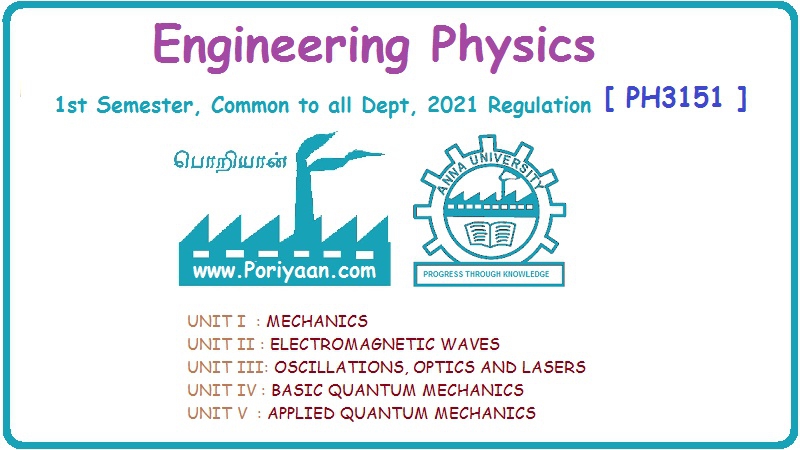Engineering Physics: Unit V: Applied Quantum Mechanics
Scanning tunneling Microscope (STM)
Working Principle, Construction, Scanning, Advantages, Disadvantages, Applications
A scanning tunneling microscope, or STM, is a type of electron microscope. It is commonly used in fundamental and industrial research.
SCANNING TUNNELING MICROSCOPE (STM) A scanning tunneling microscope, or STM, is a type of electron microscope. It is commonly used in fundamental and industrial research. ● It is an instrument used for imaging surfaces at the atomic level. ● Due to its high resolution, individual atoms within materials are routinely imaged and manipulated. Note: Invented in the year 1981 by Gerd Binning and Heinrich Rohrer from IBM's Zurich Research Center in Switzerland. It helped them to win Nobel Prize in Physics in the year 1986. It is based on the concept of quantum mechanical tunneling of electrons. ● In this technique, a sharp narrow conducting needle (probe) or tip is brought very near to the surface to be examined (Fig. 7.7) ● A small voltage difference about 1V is applied between the tip and the surface of the material ● This allows electrons to tunnel through the vacuum between them and results in tunneling current. ● Information about surface morphology is obtained by monitoring the tunneling current. The tip's position scans across the surface and it is usually displayed in image form The components of STM include 1. Scanning needle tip 2. Piezoelectric controlled height and surface (x, y) scanner. 3. Coarse sample to tip control 4. Vibration isolation system and 5. Computer ● Needle tip for scanning the sample surface. It is often made of tungsten. ● Piezoelectric tube is provided with tip and electrodes. It is capable of moving X, Y, Z directions. It is used to maintain the tip position with respect to the sample and scanning the sample. ● Coarse sample to tip control is used to bring the tip close to the sample. ● Vibration isolation systém: It prevents any vibration or sound in the system ● The computer is used to acquire the data and it may also used for enhancing the image with the help of image processing as well as performing quantitative measurement. The sharp metal needle is brought close to the surface to be imaged. The distance is of the order of a few angstroms. ● A bias voltage is applied between the sample and the tip. When the needle is at a positive potential with respect to the surface, the electrons can tunnel through the gap and set up a small "tunneling current" in the needle. This feeble tunneling current is amplified and measured ● With the help of the tunneling current, the feedback electronics keeps the distance between tip and sample constant. ● Once tunneling is established, the tip's bias and position with respect to the sample can be varied and data are obtained from the resulting changes in current. ● If the tip is moved across the sample in the x - y plane, the changes in surface height and density of states causes changes in tip current. These changes are mapped in images to present the surface morphology. ● This change in current with respect to position can be measured itself, or the height Z of the tip corresponding to a constant current can be measured. These two modes are called constant height mode and constant current mode, respectively. STMs are helpful because they can give researchers a three dimensional profile of a surface. It allows researchers to examine a multitude of characteristics, including roughness, surface defects and determining things about the molecules such as size and conformation. ● For an STM, good resolution is 0.1 nm lateral resolution aneh 0.01 nm depth resolution. ● The high resolution of STMs enable researchers to examine surfaces at an atomic level. ● Capable of capturing much more detail than other microscopes. This helps researchers better understand the subject of their research on a molecular level. ● STMs are also versatile. They can be used in ultra high vacuum, air, water and other liquids and gasses. ● They will operate in temperatures as low as zero Kelvin up to a few hundred degrees Celsius. There are very few disadvantages of using a scanning tunneling microscope. ● STMs can be difficult to use effectively. There is a very specific technique that requires a lot of skill and precisions. ● STMs require very stable and clean surfaces, excellent vibration control and sharp tips. ● A small vibration even a sound, can distrub the tip and the sample together. ● Éven a single dust particle can damage the needle. ● STMs use highly specialized equipment that is fragile and expensive. ● The electronics require for STM are extremely sophisticated as well as very expensive 1. It is a powerful tool used in many research fields and industries to obtain atomic scale sample imaging and magnification. 2. One innovative applications of STM recently found is manipulation of atoms. For example, Iron atoms are placed on Cu surface and dragged by the STM tip and moves across the surface to a desired position. 3. It is used to analyze the electronic structures of the active sites at catalyst surfaces. 4. (STM is used in the study of structure, growth, morphology, electronic structure of surface, thin films and nano structures. An interesting phenomena occurs when two barriers of width a separated by a potential well of small distance L as shown in fig. 7.13. This leads to the concept of resonant tunneling. For example, assume that incident electrons have energy E and that all the energy states En lie above E, as shown in fig. 7.14. The barriers are sufficiently thin to allow tunneling and the well region between the two barriers is also sufficiently narrow to form discrete (quasi-bound) energy levels, as shown in fig. 7.13. The transmission coefficient of the double symmetric barrier becomes unity (ie., T = 1), when the energy of the incoming electron wave (E) coincides with the energy of one of the discrete states formed by the well. where n = 1, 2, 3 ... Thus, transmission probability of the double symmetric barrier is maximum and hence, the tunneling current reaches peak value when the energy of electron wave is equal to quantised energy state of the well. This phenomenon is known as resonance tunneling. • The double barrier junction has important applications to a device known as Resonant Tunneling Diode (RTD)Principle
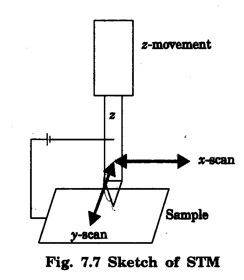
Construction
Working

Scanning
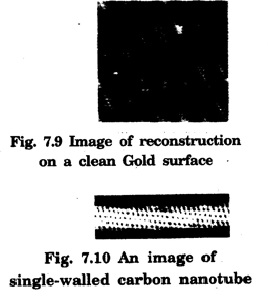
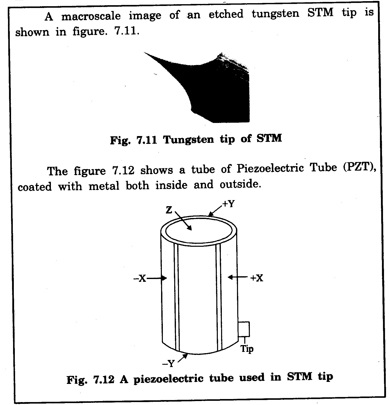
Advantages of STM
Disadvantages of STM
Applications of STM
Concept of Resonant Tunneling
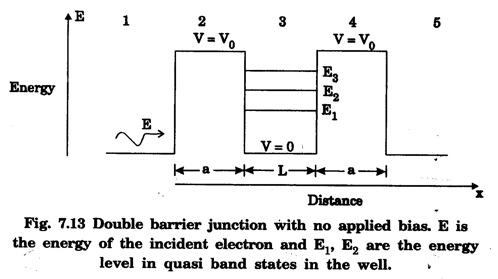

Engineering Physics: Unit V: Applied Quantum Mechanics : Tag: : Working Principle, Construction, Scanning, Advantages, Disadvantages, Applications - Scanning tunneling Microscope (STM)
Related Topics
Related Subjects
Engineering Physics
PH3151 1st semester | 2021 Regulation | 1st Semester Common to all Dept 2021 Regulation
